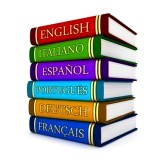Readability means the level of comprehension and the ease of finding information. When we write, who do we write for? Do we really know who our reader is or who our readers/audience are? When your writing/text goes online, the question is even harder to answer.
I raise these questions because of what the readability data shows us. I refer to Dale and Chall’s definition of ‘readability’ as they include “all those elements within a given piece of printed material” and refer to how the reader understands the content (1949, p. 23).
We write with our knowledge, and as a reader we comprehend through the combination of words on the page/screen and our own personal world knowledge. How do you understand the word ‘system’? It can be a computer system; it may be a watering system or a communication system. Yet many times a writer does not provide a clear definition or an appropriate descriptive word (eg adjective). Accordingly miscommunication can occur.
When you are reading or listening to information, start to look for the meaning of the concepts/nouns and see if they are logically linked. As a reader you should not have to make assumptions of what the text means. That’s why we advocate for clarity in communication. And the clear writing tools may differ for each different audience that you write for.
Dale, E. & Chall, J. S. (1949). The concept of readability. Elementary English, 26, 19–26.
Copyright © Opal Affinity Pty Ltd 2025 Australia ABN 77 131 148 804

